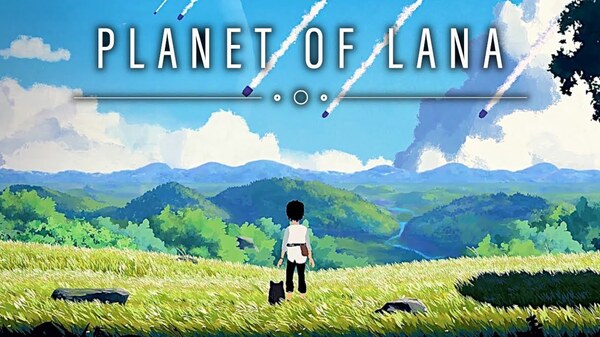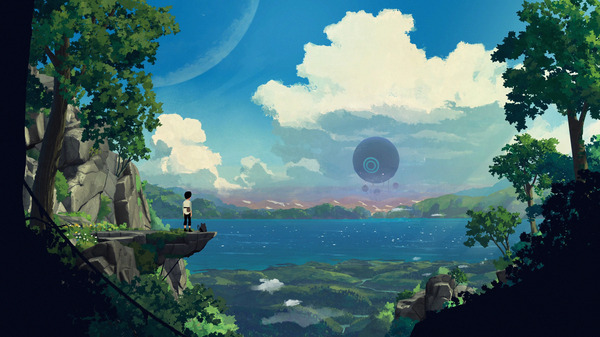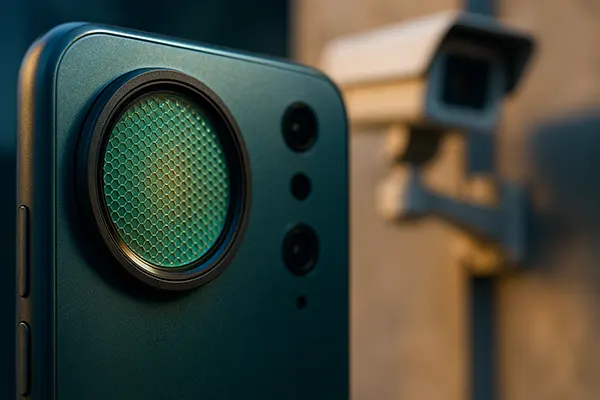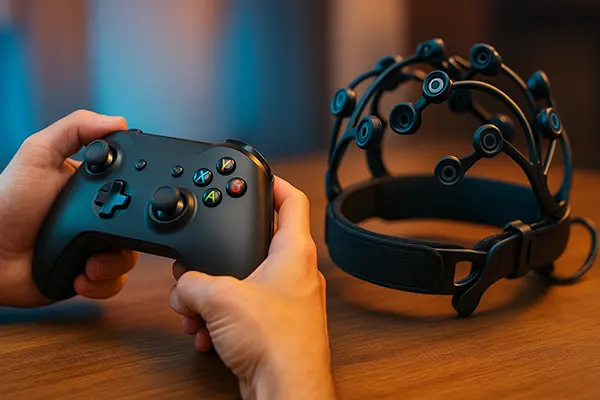
Planet of Lana: A Review
Every time you encounter a game reminiscent of industry masterpieces such as Limbo and Inside, one question arises: why have these particular gems inspired the creators? Did the innovators want to emulate the success of Playdead, or did they believe this genre would best convey their ideas? It’s challenging not to compare Planet of Lana with the aforementioned projects. It boasts stunning visuals, tells a wordless story, and shares similar gameplay mechanics. Yet while its visuals are impeccable, the gameplay doesn’t quite reach the same heights.
The Last Hope
In the spirit of classic platformers, we run left to right, overcoming obstacles. Or rather, in the introduction, we must run right to left — before the village is invaded by either reanimated mechanisms or extraterrestrials. They kidnap villagers, lock them in cages, and among them, seize the sister of our main heroine. Where exactly we’re running to is unclear; it’s also unclear why our protagonist, Lana, is so confident in her abilities and knows how to save her fellow villagers.
Crafting an engaging narrative in such games is not an easy task, especially when characters speak in a made-up language, and words are only visible in the main menu and pop-up hints. While other games manage to evoke at least some emotions, Planet of Lana doesn’t quite accomplish that — I found myself indifferent to whether the sister would be saved or not. Details about the universe are communicated rather vaguely. During her journey, the heroine finds mysterious mechanisms and hidden tablets, but their purpose is not explained, so you just interact with them and move on.
On the other hand, looking at Planet of Lana is a delight. The locations resemble watercolor paintings that are hard to look away from: they’re voluminous despite the two-dimensionality of the drawn objects, and the palette is not overly diverse. Trees, for example, are painted in three colors, but they are animated so well that they don’t require meticulous detailing. Occasionally, the developers seem to indulge themselves by making the player slowly walk through a beautiful location or significantly zoom out the camera. However, it’s hard to fault them for this — the game truly looks spectacular.
However, impressive graphics cannot mask the game’s gameplay shortcomings. Even excluding the puzzles, the platform episodes are not particularly striking – you run, you duck to crawl under a large rock, you jump somewhere. Obstacles seem to be placed just for the sake of variety – if the player has been running for a while, let’s make them press a couple of buttons in the next scene. In some moments, the game defies expectations and doesn’t even offer puzzles to solve, despite the numerous objects on the screen – you simply move right.
Quite soon, Lana encounters a companion – a creature resembling a monkey and the rot from Kena: Bridge of Spirits at the same time. You can give it commands – to sit at a designated spot, to run after the heroine, and to interact with objects. Both Lana and her companion have their strengths and weaknesses: if Lana can swim, the creature refuses to touch water, but it can jump much higher than Lana.

These distinctive characteristics serve as the basis for many puzzles. Sometimes Lana has to find logs and drop them in the water to help the creature reach the opposite shore. Sometimes the companion climbs up and presses a button, which causes a platform to appear below. However, the further you progress in the game, the more frequently the same situations requiring the same solutions start to repeat. You’d run out of fingers on both hands trying to count how often you need to ask your companion to climb a high ledge and drop a rope – with all the animations and aiming, this takes so much time that it feels like the developers intentionally dragged out these moments.
The rest of the puzzles aren’t much better – even if you’re not a puzzle fan, you won’t encounter a single one that requires serious thought. Many of them are solved without hesitation – you simply press a button if it’s available, jump on a platform if you can reach it, and everything unravels itself. Perhaps this was the intention, but due to the simplicity of the puzzles, it often feels like you’re wasting your time.
Nevertheless, there are decent puzzles with unique mechanics. In one episode, you need to explore a small location and look for drawings on the walls that help arrange several objects correctly. In others, you encounter animals and have to use them as helpers, although they are ready to tear you apart at the first opportunity. There are also amusing and peculiar stealth episodes, where you distract guard robots with the help of your companion, while you yourself reach the next area from another side. But then you run into a puzzle eerily similar to the one you solved half an hour ago, and you instantly find the solution.
Despite the simplicity of its gameplay, it’s hard to assign Planet of Lana a low rating. True, it doesn’t bring any fresh ideas to the table, and its gameplay turned out to be the weakest aspect of the game, but it doesn’t become a mediocre experience because of this. As a vivid and beautiful adventure for a single evening, it deserves attention: there are many spectacular scenes, including those involving aliens, and the music is exceptional – composed by the same talent behind The Last Guardian, who is skilled at creating soundtracks for games featuring animal companions.
The project resembles a charming interactive postcard: it looks wonderful, doesn’t irk you in any way, but probably won’t leave a lasting impression. However, it’s still worth taking a look – the “postcard” turned out to be too beautiful to ignore.


